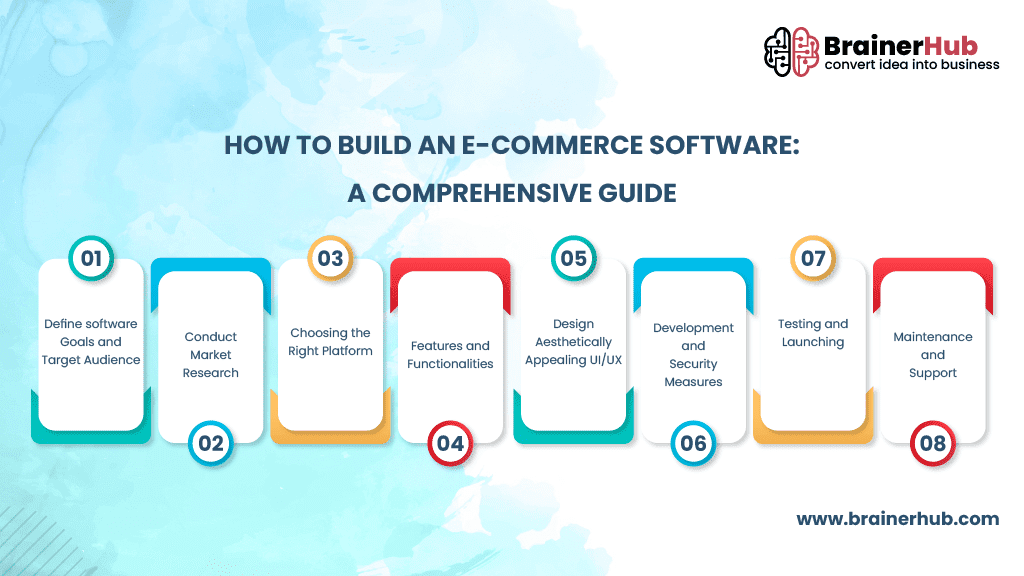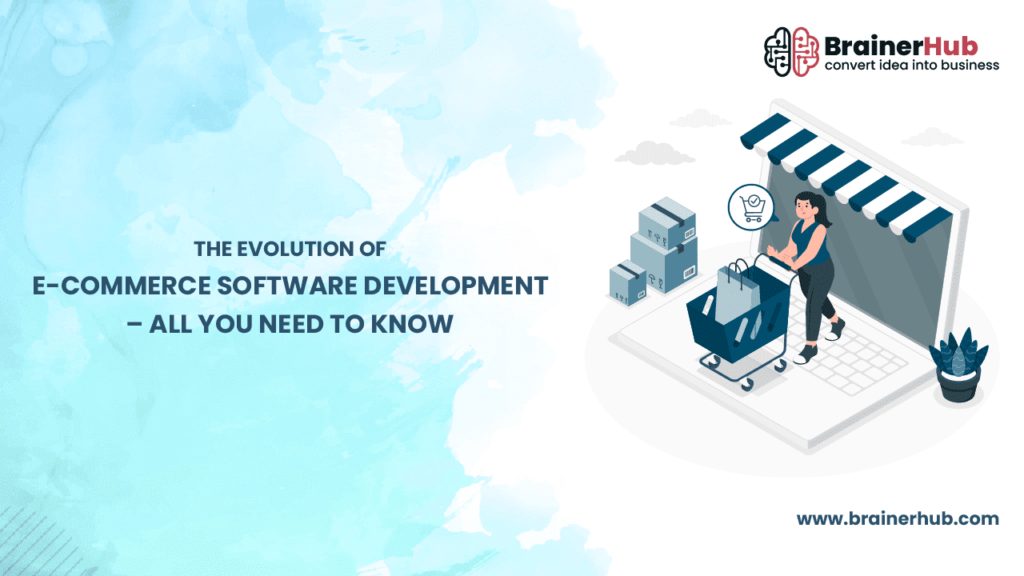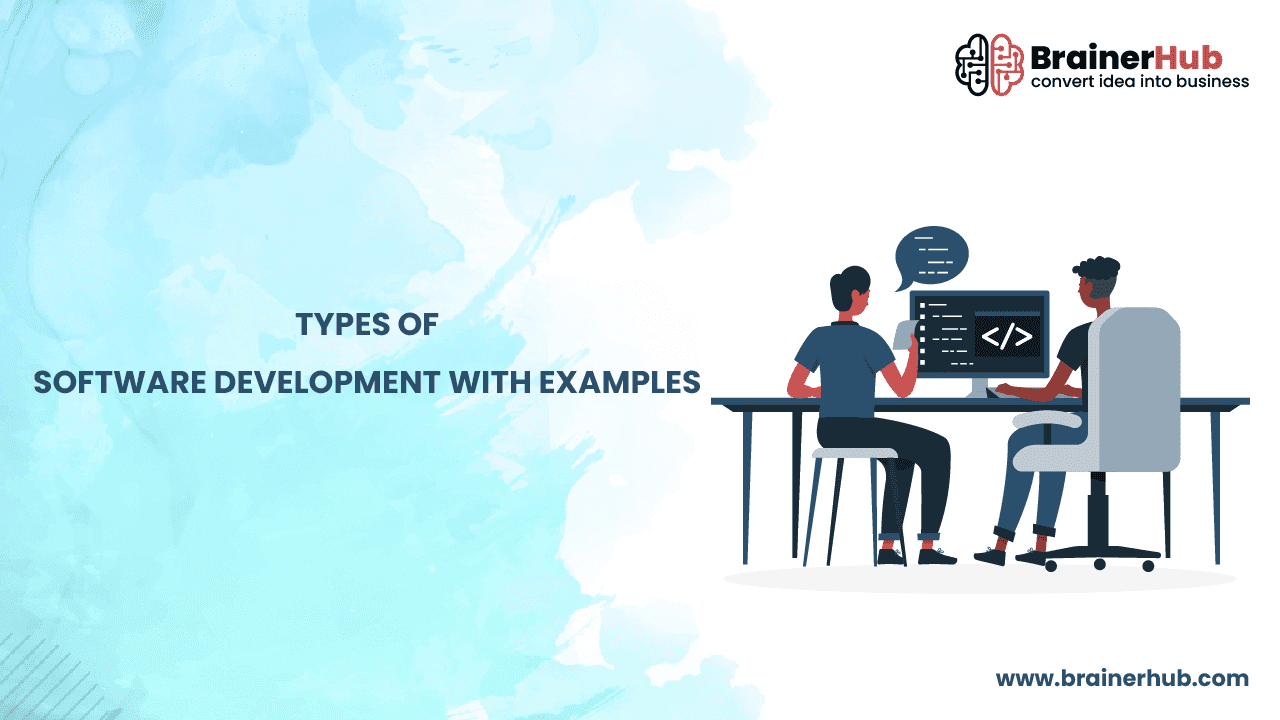Nowadays, online shopping has become the cornerstone of modern consumer behavior. To thrive in this competitive arena, businesses need more than just a website – they require robust, tailored solutions that can streamline operations and enhance overall customer experiences. E-commerce software development is considered a revolutionary field that empower businesses to adapt, grow, and succeed in the marketplace.
E-commerce software development encompasses a diverse range of technologies, tools, and strategies designed to facilitate online transactions, manage inventory, analyze data, and optimize marketing efforts. From custom-built platforms to off-the-shelf solutions, businesses can leverage these tools to create seamless, user-friendly shopping experiences that drive conversions and foster customer loyalty.
One of the key benefits of ecommerce software development is its versatility. Whether you’re a small start-up or a multinational corporation, there are solutions available to suit your unique needs and goals. From scalable platforms that can accommodate rapid growth to mobile-responsive designs that cater to the ever-expanding mobile market, the possibilities are endless.
What are the Different Types of E-Commerce Software Development?
There’s a good probability you fit into one of these general categories if you are starting an online business:
- Software-as-a-Service (SaaS)
- Platform-as-a-Service (PaaS)
- On Premises
1. Software-as-a-Service (SaaS)
Software for e-commerce websites that is completely hosted off-site and has operations, hosting managed by a third party is known as software as a service (SaaS). Basically, this third-party provides software and resources to build online store for successful run as well as attract more audience. The majority of online shops rely on hosted ecommerce software suffices, as it has undergone significant evolution to enable extensive customization and flexibility. SaaS software is also readily scalable and available in cost-effective bundles.
2. Platform-as-a-Service (PaaS)
PaaS offers you access to the actual hardware that powers the website, making it comparable to the SaaS approach. This provides both software and hardware while maintaining hosting. You can access operating systems, servers, database administration, development tools, and storage space. The e-commerce website through this platform will require more time to create and maintain.
3. On Premises
The hardware and software on an on-premise platform are fully hosted on-site. The company runs the software on one or more servers that are housed in its physical location, and it uses an internet connection to link its website to the rest of the globe. This provides the company ultimate control over how the website operates, but it still needs to maintain hardware.
Above mentioned e-commerce software models are highly in demand and one could choose according to their business requirements.
Next, let’s delve into must-have features in e-commerce software that will make overall process a smooth experience.

List of Must-Have Features in E-Commerce Software Development:
Following are the features that one must incorporate in their e-commerce software development:
Online Store
With the help of eCommerce software. Companies can create and personalize their online storefronts, presenting its products and services in a visually appealing as well as well-organized manner. These advanced capabilities simplify the process of creating a unique store.
Inventory Management
This feature will make it possible to track and manage inventory level effectively, guaranteeing that products are kept in sufficient supply and averting a stockouts or oversales. Your store will never run out inventory thanks to this software.
Payment Processing
By integrating safe payment gateways, eCommerce software enables companies to securely process transactions and accept a range of payment methods. Your clients will be free to use any payment gateway they choose to complete their transactions.
Order Management
It makes order processing, shipping, and tracking easier, all the way from order placement to fulfilment. This tool makes sure that orders are managed effectively, keeping your customers satisfied every time.
Analytics and Reporting
Ecommerce software offers useful information on sales, consumer behavior, and website performance through analytic tools, enabling decision-makers in business to make well-informed choices. This function aids in the decision-making process so that you may expand your business and satisfy customers.
Marketing and Promotion
To draw in and keep consumers, it frequently consists of tools for advertising campaigns, search engine optimization, and promotional initiatives. By using this functionality, you can maintain your competitive advantage. You may maintain the most recent SEO algorithms and updates optimized for your store.
Security Measures
Ecommerce software employs security processes and methods to protect confidential client data and guarantee safe as well as secure transactions. This feature gives your online business complete protection against malware and hacking.

How to Build an E-Commerce Software: A Comprehensive Guide
To develop an E-commerce software, these are the following steps to follow:
1. Define software Goals and Target Audience
Give a clear description of your e-commerce software’s goals. Determine your target market, their inclinations, and the differentiators that will make the app stand out from the competition. In order to plan for the integration of particular functionalities that require development, be explicit while defining specified objectives. The software’s niche is discovered throughout the process of determining the user base and their preferences.
2. Conduct Market Research
Examine the e-commerce software trending in the market to understand their functionality, design, and user experience. It’s important to conduct market research to comprehend market trends, rival tactics, and expectations that will help to develop successful e-commerce app for your business.
3. Choosing the Right Platform
When developing E-commerce software, it is important to choose the right platform. You need to decide if you want to use cross-platform, iOS, or Android. It takes more time and effort to use the first platforms, hence businesses opt for cross-platform as an affordable alternative. The cost of development also plays a crucial role while creating a platform.
4. Features and Functionalities
Wondering what features and functionalities to add while developing e-commerce software? Here are the basic and advance features that one could choose from simple onboarding, intuitive UI, safe payment method, real-time notifications, round-the-clock customer services, reviews, and feedback. For advanced functions, key elements like real-time analytics, efficient CRM systems, IoT-integrated apps, and other features will enhance overall user experience.
5. Design Aesthetically Appealing UI/UX
A well-thought-out app with simple functions and a visually appealing layout will draw in and keep users. To provide a smooth user experience, the UI needs to be easily navigable, responsive, and intuitive. Create aesthetically pleasing and easy-to-use mobile e-commerce applications. Ensure to give top priority to unique design, simple navigation, and a flawless buying experience.
6. Development and Security Measures
The next step is to develop reliable, scalable, and compatible e-commerce software that can function on both iOS and Android platforms. Native development and cross-platform solutions are both highly recommended. Put security first to safeguard user information and transactions. Implement SSL certificates, and encryption techniques, and make sure data protection laws are followed. Update the software frequently to fix security flaws.
7. Testing and Launching
After the development process, it is important to test the e-commerce software before launching in the market. The mobile application will undergo both automatic and manual testing during this phase. This stage ensures that your software is operating without any glitches, or slowdown, all while maintaining strong security. Once the testing is cleared, the e-commerce application is ready to launch in the market.
8. Maintenance and Support
Once the e-commerce software is launched in the market, it is highly suggested to provide regular support and maintenance. Update the app frequently, add new features, enhance security and gather customer feedback to fix current issues.
This methodology will help to develop standard e-commerce software for your business.

How Does E-Commerce Software Development Ease the Business?
There are several everyday duties that one must complete when selling goods or services online in order to your virtual store running effortlessly. Businesses prefer custom eCommerce software solutions for carrying effective responsibilities and significantly contribute towards business’ overall streamlining.
Key Factors to Consider for Ecommerce Software Solutions that will Help to Transform the Business:
- It will make it easier for your clients to peruse your online store and locate the items of their preferences.
- Your consumers will find it easier and add items to wish lists and carts while having their personalized profiles.
- The e-commerce software guarantees secure transactions, boosting your online store’s legitimacy and authenticity.
- It will facilitate the usage of third-party services, including delivery options, dates, and shipping costs.
- It guarantees efficient handling of payments.
- It guarantees easy order placement and administration.
- The software also provides delivery tracking so customers are up-to-date about the same.
Final Thoughts on E-Commerce Software Development:
In conclusion, e-commerce software development stands at the forefront of modern business strategies. It’s not just about creating a functional online store; it’s about crafting seamless user experiences, robust security measures, and scalable solutions. From intuitive UI/UX designs to integrated payment gateways, the success of e-commerce ventures hinges on meticulous software development. Moreover, the rapid evolution of technology demands continuous adaptation and innovation. As such, businesses must prioritize collaboration with skilled developers and stay abreast of emerging trends. Ultimately, investing in high-quality e-commerce software development is paramount for driving growth, fostering customer loyalty, and staying competitive in the digital marketplace.
Are you planning to develop e-commerce software for your business?
At BrainerHub Solutions, we can assist you with developing e-commerce software from initial stage of planning to final level of execution. Connect with our team to schedule a consultation and let us know your project requirements. Get in touch now!
Frequently Asked Questions
Property management system is basically a software program that is specifically designed to handle commercial, residential rental properties and other lodging establishment.
The property management software helps you to save time and money by efficiently balancing company’s operations. Tasks like tracking leases, collecting rent, and requesting repairs are automated by this software. It can also help you stay in compliance with rules and regulations as well as enhance communication with both property managers as well as tenants.
The main agenda of developing property management software is to provide a platform for property managers and maintenance staff to monitor daily operations of their properties. Further, the main objectives to achieve are clear communication, property maintenance, risk management, and tenant satisfaction.




